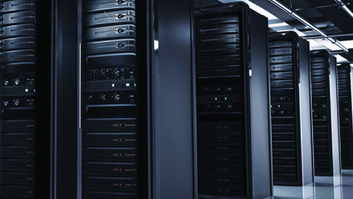
The company’s data centre
Data centres have become an increasingly important part of people’s daily lives. Ensuring the most efficient and secure operation of data centres is a priority for every business. Building and maintaining a data centre can be a huge and capital-intensive task for a company.
We develop reliable, efficient and scalable data centre infrastructures
Integrating smart racks, including PDUs, environmental sensors, access control systems, asset monitoring, serial consoles and KVM into colocation racks for IT equipment is a cost-effective way to ensure that IT systems are always operating at full capacity and that the hardware environment is safe, in terms of both conditions and physical security. Maximum availability and the highest return on investment.

Business network
Modern data centres are extremely complex buildings, and they are only getting more complex. The cost of building a state-of-the-art hyperscale data centre can quickly run into millions of euros, even before a single Bitcoin has been mined or a single video has been recorded. A company that decides to build its own data centre needs a strategy, a vision and perseverance. The construction phase must be completed and the systems must be up and running before return on investment can even be considered. Despite real and perceived difficulties, many companies still want to have their own infrastructure.
Such a standalone concept is preferable if IT is a profit centre for the company, not a cost centre. A well-designed IT environment that provides the right user experience can be a valuable and unique selling point for enterprises. Amazon.com is an excellent example of this.
Compared to renting a colocation space or using public cloud infrastructure, building a data centre gives you more flexibility to manage costs. A company may also need its own infrastructure if business growth requires applications to be moved out of the cloud or out of a colocation centre.
The pros and cons of having your own infrastructure
The complexity of present-day data centres is a huge barrier for many companies. Here are some of the decisions and goals needed to build a well-functioning data centre of your own:
- What will be the data load in the data centre? Does it depend on a certain level of uptime (99.999%) or on a level rating (as defined by the Uptime Institute)?
- Does a data centre have to have a certain power usage effectiveness (PUE) or carbon footprint?
- What are the power and cooling requirements per square metre
- Will the data centre use locally produced renewable energy, or is it dependent on the electricity company?
- How will the actual data infrastructure and other supporting components of the data centre environment (offices, cooling, etc.) be located?
- What level of physical and logical access control is initially needed, and which systems require maintenance?
- Does the data centre need staff 24/7?
- What latency and response targets will the data centre have?
- Is there a need for a second, parallel space for disaster recovery in the data centre?
- How quickly do the business systems need to be up and running?
- Does the data centre support not only production but also development?
- What is the basic ecosystem that’s needed? Open Compute vs. Open19 vs. OEM vs...
- How long is the data centre expected to be in use before being upgraded?
- How often do the users need to have physical access to the equipment? How often does the equipment need to be updated?

Building and operating a data centre requires a reliable team of professionals who can meet both the needs of the company and future users of the data centre. Simply knowing IT systems and software is not enough to successfully design and build a data centre. To minimise costs and maximise ROI, it’s necessary to have experts in real estate, finance, energy and waste management, contracting, procurement, project management, human resources and property management.
Give these experts time to ask detailed and difficult, but necessary questions. This information is needed to meet the management expectations that led to the decision to build a well-functioning data centre. Documenting and reviewing responses with senior management ensures that all parties understand the goals and success criteria for building a data centre.
No data centre can function without electricity. The choice of electrical architecture and power supply for the data centre and racks determines whether the company’s data centre will meet the desired performance metrics. The PDU selected for the rack helps to measure performance and manage power in a heterogeneous environment with many different server, storage and connection providers.
In addition, the successful creation of a data centre depends heavily on the suppliers and partners chosen for the design, construction and deployment. The result is more likely to align with the goals when the companies that are selected as the suppliers are innovative and capable of delivering a wide range of data centre products with the volume, features and availability that a good data centre needs.



